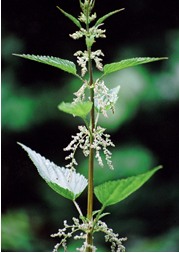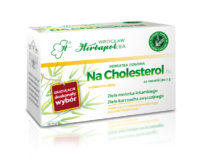(Urtica dioica)
Stinging nettle is an annual plant of the Urticaceae family (urticaceae). It has been used in phytotherapy since ancient times. In medieval Europe it was known as a spinning plant, even before the introduction of cotton. It was also considered a magical plant. It was believed that it may protect against lightning, and Slavs repelled evil charms with it. Nettle accompanied mankind for centuries, occurring commonly in the meadows, in home gardens, on the banks of rivers and lakes and in deciduous forests. We associate it with an unpleasant stinging, due to a substance called histamine and formic acid, which are contained in the glandular hairs on the underside of leaf blades.
Nettle leaves contain many active ingredients, among others: silicic acid, vitamin C, minerals and organic acids. Infusions of raw material support the proper functioning of the urinary tract and support the process of elimination of metabolic waste products. Young leaves are also used in the kitchen. Freshly harvested they are characterized by a spicy, bitter taste and can be added to salads and cleansing lotions.
P. Ody,Wielki zielnik medyczny, wyd. DEBIT, s. 108
Ojciec A. Bilgri, A. Birgit, Zioła w kuchni i aptece, s. 41-42
M. Pieszak, P. Mikołajczak, Właściwości lecznicze pokrzywy zwyczajnej (Urtica dioica L.), Postępy Fitoterapii 4/2010, s. 199-204

